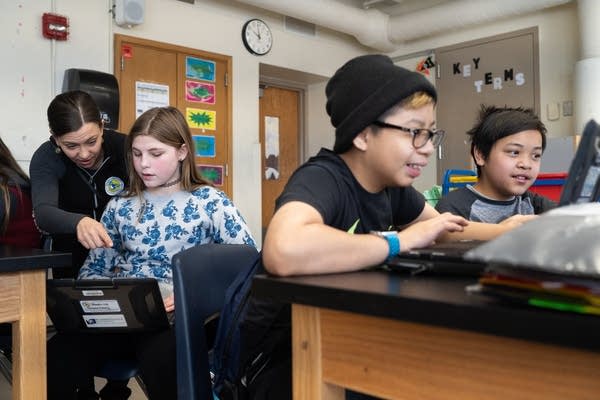Snow days turn into 'digital days' at some Minnesota schools

Go Deeper.
Create an account or log in to save stories.
Like this?
Thanks for liking this story! We have added it to a list of your favorite stories.
Robbinsdale superintendent Carlton Jenkins was comfortable closing his district's schools during a recent stretch of dangerous, subzero temperatures. He knew he could keep the learning going even when his buildings were shut.
Thanks to a voter-backed levy, every fourth- through 12th-grader had access to laptops, and district leaders built "flex-learning" days into the school calendar.
So, when late January wind chills fell past minus 40, Robbinsdale was ready. The district closed schools but had teachers prep videos to coach kids through the day's assignments. Students could grab the videos online from home the next morning and do the work.
"The students appreciated the fact that they could continue with their learning," said Jenkins. "Staff appreciated the fact that they could continue with their lessons."
Turn Up Your Support
MPR News helps you turn down the noise and build shared understanding. Turn up your support for this public resource and keep trusted journalism accessible to all.
Robbinsdale is among a growing number of Minnesota school districts embracing e-learning on days when the weather makes it too dangerous for students to get to school. It's easier than ever thanks to improving technology — and a change in state law.
In a season where snow and cold weather have forced Minnesota schools to cancel as many as nine school days this year, the digital-days allowance has let Robbinsdale stick pretty closely to its original schedule and avoid extending classes into spring break, holidays or staff training time.
Jenkins said Robbinsdale began moving toward e-learning days a few years ago after hearing of a successful model built by the Farmington public schools.
In Robbinsdale, e-learning has some fans. Robbinsdale Middle School eighth-grader Tommy Resja said he's had a pretty good experience with lessons at home when the weather's bad.
"It seems, for the most part, to be working pretty well," he said. "And it's fun to be in my pajamas doing schoolwork."

School officials, though, know it doesn't work for everyone. The model assumes students have access to the internet at home, which is not a given even in a digital age. It can also be a challenge for teachers to write lesson plans for kids who may need more hands-on attention.
"It does take a lot of time to plan good e-learning modules, particularly for younger learners who may still be learning to navigate the technology, who are developing readers," said Melissa Davey, who teaches French and English as a second language at Robbinsdale Middle School and had to prep a digital lesson at home recently while caring for her toddler.
"We're looking at what can students do independently on their own or in a limited English proficiency household," she said. "That is a very significant challenge."
Little Falls Community Schools, a rural district in central Minnesota between St. Cloud and Brainerd, has experimented with e-learning and flexible learning days, but the district has put its focus this year on other instructional priorities, said Wade Mathers, principal at Little Falls Community Middle School.
Some district students live in areas where internet is not available and some families can't afford internet, he noted.
Beyond that, e-learning takes a lot of planning to put into practice, he added. "If the e-learning is not a fine-oiled machine, where you kind of all know what you're doing, you can't plan for a snow day."




